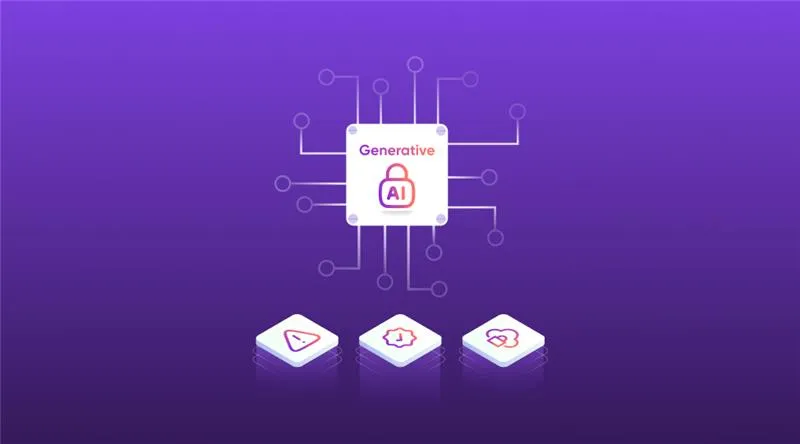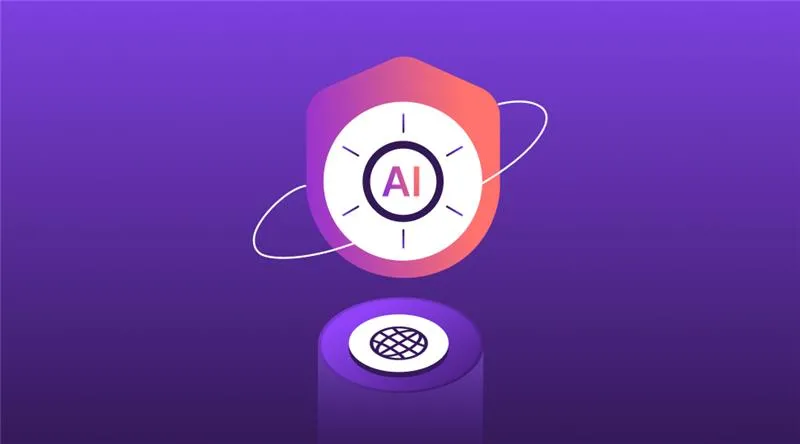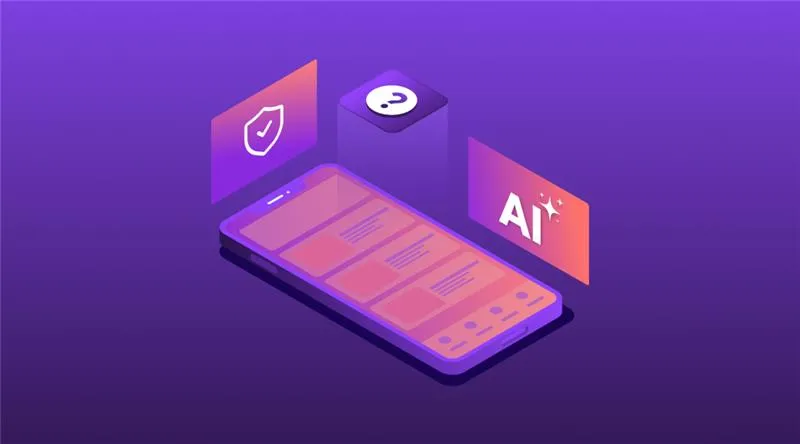Technology

10 min

Discover the future of mobile app creation with the most innovative development tools that elevate app quality and speed. This blog’ll explore powerful platforms, coding frameworks, and design resources that empower developers to craft seamless, high-performance apps that leave a lasting impact.

By Anupam Singh
06 Sep, 2024
If you’re here, you’re likely seeking information on the best mobile app development tools and software for creating applications. Understanding app development tools can be significantly complex when resources don't differentiate between native, cross-platform, low-code, and no-code solutions.
Many existing resources fall short by not categorizing tools effectively. They often mix native development tools with cross-platform solutions and fail to distinguish between low-code and no-code options. To fill this gap, we have meticulously curated a list of the leading mobile app development software, segmented into clear categories:
Our structured list aims to streamline your search. The guide will help you identify the tools that best fit your development needs and skill level.
However, before discussing app-building software or tools, let’s understand their importance and what they are.
Let’s get started!
Creating a mobile app is far from a quick fix—it’s a complex endeavor that demands various tools to get it right. At the heart of this process is mobile app development software, which is a game-changer in the app development industry.
These specialized app-building software platforms are designed to simplify and accelerate the app development journey. They offer a range of features, including IDEs, no-code options, pre-designed templates, APIs, data synchronization, and comprehensive analytics.
With these tools, developers can build apps more quickly and integrate them seamlessly with backend services, such as push notifications. They provide a visual development environment, ensure hardware compatibility, and support efficient workflow design.
Are you curious about the types of tools available? Let’s explore the various mobile app development software and tools.
Native mobile development tools are essential for developing applications tailored to a single platform. These specialized tools are designed to optimize the creation of apps for either Android or iOS, ensuring that each application is fully integrated with its target operating system's unique features and capabilities.
By leveraging native development tools, you can achieve peak performance and a seamless user experience specific to each platform.
 These are categorized into two parts: Native tools for Android and Native tools for iOS.
These are categorized into two parts: Native tools for Android and Native tools for iOS.
Developing native Android applications requires specific tools to streamline and enhance the mobile app development process. The content below provides the best Android development tools available for efficient development.
 Android Studio is Google's official IDE, tailored to Android app development services. It is one of the most essential mobile app development tools. It provides comprehensive features to streamline development, from writing and editing code to testing and debugging applications. Built on the IntelliJ IDEA platform, Android Studio integrates various tools and functionalities that cater to every stage of Android development, ensuring a cohesive and efficient workflow.
Android Studio is Google's official IDE, tailored to Android app development services. It is one of the most essential mobile app development tools. It provides comprehensive features to streamline development, from writing and editing code to testing and debugging applications. Built on the IntelliJ IDEA platform, Android Studio integrates various tools and functionalities that cater to every stage of Android development, ensuring a cohesive and efficient workflow.
Top Features of Android Studio
Eclipse, combined with the Android Development Tools (ADT) plugin, was once a prominent choice among Android app development tools. It extended the Eclipse IDE to support Android-specific functionalities, enabling developers to design, code, and debug Android applications within the familiar Eclipse environment. Although the ADT plugin has been deprecated and replaced by Android Studio, Eclipse with ADT was a foundational tool for many developers transitioning to Android development.
Top Features of Eclipse with ADT Plugin
IntelliJ IDEA, developed by JetBrains, is a versatile and powerful IDE known for its strong support for Java and other JVM languages. IntelliJ IDEA offers many of the same advanced features as the foundation for Android Studio. Its extensive capabilities go beyond Android development, supporting various programming languages and frameworks.
Top Features of IntelliJ IDEA
 The Android Native Development Kit (NDK) is a crucial toolset for Android development that enables developers to write parts of their apps using native languages like C and C++. As a specialized mobile app development tool, the NDK is designed to create high-performance applications that require close-to-hardware optimizations or need to integrate with existing native libraries. It supports various CPU architectures and provides robust tools for native code debugging and optimization.
The Android Native Development Kit (NDK) is a crucial toolset for Android development that enables developers to write parts of their apps using native languages like C and C++. As a specialized mobile app development tool, the NDK is designed to create high-performance applications that require close-to-hardware optimizations or need to integrate with existing native libraries. It supports various CPU architectures and provides robust tools for native code debugging and optimization.
Top Features of Android NDK
Developing native iOS applications requires specific tools to streamline and enhance the step-by-step iOS app process. The content below provides the best iOS development tools available for development.
 Xcode is Apple's official integrated development environment (IDE) for macOS and is considered one of the primary mobile app development tools for iOS apps. It provides a comprehensive suite of tools for coding, designing, debugging, and testing iOS applications. Xcode integrates an advanced code editor, Interface Builder, and a powerful simulator to streamline the development workflow and ensure seamless deployment across various Apple devices.
Xcode is Apple's official integrated development environment (IDE) for macOS and is considered one of the primary mobile app development tools for iOS apps. It provides a comprehensive suite of tools for coding, designing, debugging, and testing iOS applications. Xcode integrates an advanced code editor, Interface Builder, and a powerful simulator to streamline the development workflow and ensure seamless deployment across various Apple devices.
Top Features of Xcode
 Swift is Apple's modern programming language for iOS, macOS, watchOS, and tvOS development. As a core component of mobile app development tools for iOS, Swift offers a safe, fast, and expressive language for building high-performance applications. It was introduced to improve upon Objective-C, providing a more streamlined syntax and advanced features to enhance code safety and performance.
Swift is Apple's modern programming language for iOS, macOS, watchOS, and tvOS development. As a core component of mobile app development tools for iOS, Swift offers a safe, fast, and expressive language for building high-performance applications. It was introduced to improve upon Objective-C, providing a more streamlined syntax and advanced features to enhance code safety and performance.
Top Features of Swift
 Objective-C is a dynamic programming language that has been a staple of iOS development since the early days of Apple’s platforms. Although Swift has become the preferred language, Objective-C remains a critical component of iOS mobile app development tools, especially for maintaining and extending legacy codebases. It provides a runtime that supports dynamic typing and messaging, offering a different approach than Swift.
Objective-C is a dynamic programming language that has been a staple of iOS development since the early days of Apple’s platforms. Although Swift has become the preferred language, Objective-C remains a critical component of iOS mobile app development tools, especially for maintaining and extending legacy codebases. It provides a runtime that supports dynamic typing and messaging, offering a different approach than Swift.
Top Features of Objective-C
 AppCode, developed by JetBrains, is an alternative IDE for iOS and macOS development that complements Apple's Xcode. It provides many features designed to enhance productivity and code quality. AppCode supports Swift and Objective-C and offers advanced code analysis, refactoring, and navigation tools.
AppCode, developed by JetBrains, is an alternative IDE for iOS and macOS development that complements Apple's Xcode. It provides many features designed to enhance productivity and code quality. AppCode supports Swift and Objective-C and offers advanced code analysis, refactoring, and navigation tools.
Top Features of AppCode
 CocoaPods is a dependency manager for iOS and macOS development. It simplifies the integration of third-party libraries and frameworks into Xcode projects. As a crucial tool among iOS mobile app development tools, CocoaPods automates managing dependencies, ensuring that projects remain organized and up-to-date with the latest library versions.
CocoaPods is a dependency manager for iOS and macOS development. It simplifies the integration of third-party libraries and frameworks into Xcode projects. As a crucial tool among iOS mobile app development tools, CocoaPods automates managing dependencies, ensuring that projects remain organized and up-to-date with the latest library versions.
Top Features of CocoaPods

Flutter, developed by Google, is an open-source UI toolkit designed to build natively compiled mobile, web, and desktop applications from a single codebase. As a leading cross-platform mobile app development tool, Flutter allows developers to create visually appealing and high-performance applications with a unified codebase, leveraging its rich set of customizable widgets and reactive framework.
Facebook's React Native is a popular framework for building cross-platform mobile applications using JavaScript and React. It enables developers to create apps that run natively on iOS and Android using a single codebase. React Native bridges the gap between mobile and web app development by allowing code reuse and leveraging native components for performance.
Xamarin, a Microsoft-owned framework, is designed to build cross-platform applications using C# and .NET. Xamarin allows developers to create native iOS, Android, and Windows apps with a shared codebase, integrating seamlessly with Visual Studio. It offers comprehensive support for platform-specific APIs while maintaining a high level of code reuse.
PhoneGap, now known as Apache Cordova, is an open-source mobile development framework that allows developers to build cross-platform apps using HTML, CSS, and JavaScript. Cordova allows developers to create mobile applications that run in a web view and access native device functionalities through plugins, enabling broad compatibility across different platforms.
Ionic is a framework for building cross-platform mobile applications using HTML, CSS, and JavaScript web technologies. It focuses on creating high-quality, performant iOS, Android, and web apps. It integrates with Angular, React, and Vue, offering a range of UI components and tools for developing mobile-friendly applications.

Low-code mobile development tools have become increasingly popular because they streamline the app creation. Here are four top low-code development tools and an overview of their key features.

OutSystems is a leading low-code platform known for its robust capabilities in building enterprise-grade mobile and web applications. It offers comprehensive app development, integration, and deployment tools.
Mendix is a versatile, low-code development platform designed to streamline the application development process for organizations of all sizes, from small businesses to large enterprises. Established in 2005, Mendix is known for its emphasis on rapid development, enabling users to build and deploy applications quickly with minimal coding.
Appian focuses on providing a low-code platform for building applications that drive business processes and workflow automation. It's well-suited for organizations looking to enhance operational efficiency.
Microsoft Power Apps is part of the Microsoft Power Platform and is designed to enable users to create custom apps quickly with minimal coding. It integrates seamlessly with other Microsoft services and tools.
Each low-code mobile app development software offers unique strengths, catering to different aspects of development and organizational needs. Whether looking for a solution that excels in enterprise integration, process automation, or ease of use, these low-code platforms provide powerful options for building mobile applications efficiently.
Discover- Top 10 Best LowCode and NoCode Platforms

Bubble is powerful no-code platform app-building software that allows users to build complex web and mobile applications without writing code. It's particularly well-suited for creating custom applications with robust functionalities, including databases and workflows.
Adalo focuses on simplifying mobile development by providing a user-friendly interface for designing and deploying native mobile applications. It supports both iOS and Android platforms.
Appgyver offers a comprehensive no-code platform for building web and mobile applications. It is known for its versatility and scalability and is suitable for users with varying levels of technical expertise.
Glide is a no-code platform designed to quickly and easily convert Google Sheets into functional mobile apps. It’s trendy for its simplicity and ease of use, making it ideal for users looking to convert spreadsheets into apps.
These tools cater to different needs and types of projects, from complex web applications to simple mobile apps, providing a range of features to help users bring their app ideas to life without coding.
Choosing the right mobile development tools is essential for project success. Start by defining your app’s complexity, platform needs, and budget. For no-code solutions, consider tools such as Bubble, which excels in creating complex web & mobile apps, and Adalo, which is ideal for mobile applications. Additionally, Appgyver offers versatile development capabilities, while Glide simplifies app creation through Google Sheets integration.
Transitioning to low-code options, platforms like OutSystems, Mendix, and Microsoft Power Apps provide greater flexibility with custom coding options. These tools are well-suited for projects requiring a mix of pre-built features and personalized functionalities. They enable developers to streamline processes while maintaining control over specific app elements.
Traditional environments like Xcode and Android Studio are preferable for those needing complete control. These IDEs offer comprehensive app development tools for iOS and Android.
Moreover, As a leading mobile app development company, we have successfully developed over 3,000+ apps for our clients. We are committed to helping you find the optimal solution for your complex business needs.

The best tool depends on your app’s needs. Some popular choices include Flutter for cross-platform apps, React Native for fast development, and Swift or Kotlin for native iOS and Android apps.
If you want a cross-platform solution, Flutter or React Native are great options. For native app development, Swift (iOS) and Kotlin (Android) are often considered the best.
Flutter or React Native are popular for cross-platform apps. For native app development, developers use Xcode with Swift for iOS and Android Studio with Kotlin or Java for Android.
The four main programming languages for mobile app development are:
Yes, Flutter is an open-source framework that is entirely free to use.
To quickly build a mobile app, you can use tools like Flutter or React Native to develop cross-platform apps. They allow you to write code once and deploy it on iOS and Android, saving time and effort. App builders like Appy Pie or BuildFire also offer drag-and-drop interfaces for no-code app development.
Most Popular Web App Frameworks for Building Scalable Apps
By Sannidhya Sharma
5 min read
Web App Development Languages - Which Stack Fits Your Business Needs
By Dhruv Joshi
5 min read
How to Develop a Web App: Step-by-Step Guide from Idea to Launch
By Sannidhya Sharma
5 min read
Top 11 Must-Have Features of a Custom Web Application in 2026
By Dhruv Joshi
5 min read

Technology

7 min
Generative AI is moving fast into enterprises, from banks to hospitals to government agencies. Adoption is rapid, but security planning lags. Unlike traditional systems, these models can be exploited through prompt injection, poisoned data, or manipulated to leak sensitive information. They are also misused for phishing, deepfakes, and malicious code.


Technology

7 min
AI-powered Web Application Firewalls (WAFs) go beyond static rules by using machine learning, anomaly detection, and predictive analysis to block zero-day threats, reduce false positives, and protect APIs at scale. Unlike traditional WAFs, they self-learn, adapt in real time, and cut operational costs while improving compliance and trust.


Technology

5 min
AI is redefining mobile app security by transforming how threats are detected, tested, and prevented. From continuous monitoring and fraud detection to compliance with regulations, AI ensures apps remain resilient against modern risks. This means safer apps, protected users, and stronger businesses. Investing in AI-driven security today builds trust, drives growth, and secures long-term competitive advantage.


Feeling lost!! Book a slot and get answers to all your industry-relevant doubts